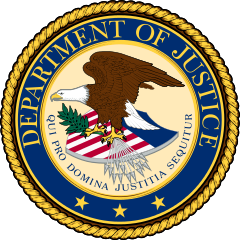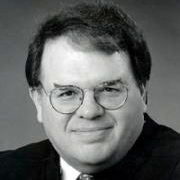Executive Summary
The appeal by the Department of Justice (DOJ) of its failed attempt before the trial court to block the vertical merger of AT&T and Time Warner was heard by the U.S. Court of Appeals for the District of Columbia on December 6, 2018. This oral argument – before Judges Judith Rogers (appointed by President Clinton), David Sentelle (appointed by President Reagan), and Robert Wilkins (appointed by President Obama) – was held more than two years after AT&T announced its agreement to buy Time Warner and more than a year after DOJ first challenged the merger.
The appellate judges’ questioning indicated skepticism regarding the merits of DOJ’s appeal. Most of the questioning centered on the DOJ’s economic model and whether the appeals court has enough of a basis to overcome the deference it is to give to the trial court’s finding that DOJ failed to show that the merger will lead to more anticompetitive harm than economic benefits. The appeal is not about whether the “economics of bargaining” model used by DOJ is legitimate or whether vertical mergers in theory can lead to anticompetitive harms. Rather, the issue before the appeals court is whether the district court judge abused his discretion in finding that the inputs used by DOJ in its model did not make a persuasive case that the merger of AT&T and Time Warner will lead to anticompetitive harm.
AT&T and Time Warner do not directly compete in any significant way, making this a vertical merger of a major multichannel video programming distributor and a major provider of program content. At trial, Judge Richard Leon, acknowledging the potential for vertical mergers to lead to economic harm, was careful to ground his analysis in standards from established antitrust precedent, which the DOJ does not appear to dispute.
DOJ claimed that the merger will allow AT&T to use Time Warner programming content to raise the costs of AT&T’s rivals, and also that, after the merger, AT&T will withhold Time Warner programming from other rivals to place them at a disadvantage. As a result, DOJ argued, cable television subscribers will be harmed by having to pay higher prices, while less video content will be produced. But after a careful review of the evidence presented at trial by DOJ based on its “economics of bargaining” theory, Judge Leon concluded that DOJ failed to provide persuasive evidence of any such harm, while DOJ’s expert witness had conceded that the merger will lead to at least some positive efficiency benefits.
To prevail, DOJ must show that Judge Leon’s decision was clearly erroneous. In other words, DOJ has to do more than show that Judge Leon was wrong in how he interpreted the economic evidence – it must show that the judge was clearly wrong and overcome the deference the appeals court is required to show to the judge’s findings of fact. This is a much more difficult test for DOJ to meet than the test at trial, where DOJ had only to show by a preponderance of the evidence that the merger more likely than not will lead to more economic harm than benefits.
It is always risky to predict the outcome of an appeal from the judges’ questions. But most of the questions from the judges focused on whether DOJ had shown enough to overcome the presumptions favoring the trial court’s ruling. The DOJ brief filed before the oral argument fell well short of that standard, and the appellate judges rightly showed skepticism about DOJ’s attempt to relitigate the case on appeal. From their questioning, it appears that the judges didn’t hear enough from DOJ to overcome the deference the appeals court is required to show to Judge Leon’s findings of fact.
Background on the Parties and the Events Leading Up to the Appeal
On December 6, 2018, more than two years after AT&T announced its agreement to buy Time Warner, the U.S. Court of Appeals for the District of Columbia heard oral arguments in the Department of Justice’s appeal of its failed attempt to block the merger in a lower court. The appeal was heard by a panel of three judges consisting of Judith Rogers, David Sentelle, and Robert Wilkins. Since AT&T has agreed to hold Time Warner assets separate from other AT&T assets until the end of February 2019, pending the outcome of the DOJ appeal, it seems likely that the judges will rule before the end of February.1See, e.g., Ted Johnson, “DOJ Won’t Seek to Halt AT&T-Time Warner Merger Pending Any Appeal,” Variety (June 14, 2018), available at: https://variety.com/2018/biz/news/doj-wont-halt-att-time-warner-merger-1202846895/.
The merger plans were originally announced in October 2016 by AT&T and Time Warner.2AT&T agreed to acquire Time Warner for $85.4 billion, or $108.7 billion if assumed debt is included. “AT&T to Acquire Time Warner,” AT&T Newsroom (October 22, 2016), available at http://about.att.com/story/att_to_acquire_time_warner.html. Over a year later, on November 20, 2017, the Department of Justice announced that it was challenging the merger in the federal district court for the District of Columbia as a violation of Section 7 of the Clayton Antitrust Act.3“Justice Department Challenges AT&T/DirecTV’s Acquisition of Time Warner,” Press Release, U.S. Department of Justice (November 20, 2017), available at: https://www.justice.gov/opa/pr/justice-department-challengesattdirectv-s-acquisition-time-warner. The DOJ challenge to the merger finally went to trial in March of 2018.4The trial began on March 19, 2018, and lasted until April 30, 2018. Ted Johnson, “AT&T-Time Warner Trial: Judge Says He’ll Have Decision in June.” Variety (April 30, 2018), available at: https://variety.com/2018/politics/news/att-time-warner-antitrust-7-1202792380/. On June 12, 2018, Judge Richard Leon, who presided over the trial in the district court, issued his ruling denying DOJ’s request to block the merger.5United States v. AT&T Inc., DirecTV Group Holdings, LLC, and Time Warner Inc. (D.D.C., 2018), No. 1:17-cv02511-RJL, available at https://ecf.dcd.uscourts.gov/cgi-bin/show_public_doc?2017cv2511-146.
Soon thereafter, AT&T and DOJ reached an agreement to allow AT&T to complete its acquisition of Time Warner without DOJ seeking an injunction to temporarily block the merger during an appeal. If an injunction had been granted, the companies would have had to either extend the date or AT&T would have had to pay Time Warner a $500 million merger termination fee. Following this agreement, AT&T completed the acquisition of Time Warner.6See., e.g., Edmund Lee and Cecilia Kang, “AT&T Closes Acquisition of Time Warner,” The New York Times (June 14, 2018), available at: https://www.nytimes.com/2018/06/14/business/media/att-time-warner-injunction.html. On August 6, 2018, the DOJ announced that it would appeal Judge Leon’s ruling and filed a brief in support of its appeal.7Proof Brief of Appellant United States of America, United States v. AT&T Inc., DirecTV Group Holdings, LLC, and Time Warner Inc. (August 6, 2018), No. 1:17-cv-02511-RJL, at 2, available at: https://www.justice.gov/atr/casedocument/file/1085516/download. AT&T filed its own appellate brief on September 20, 2018.8Proof Brief of AT&T Inc., DirecTV Group Holdings, LLC, and Time Warner Inc., United States v. AT&T Inc., DirecTV Group Holdings, LLC, and Time Warner Inc. (September 20, 2018), No. 1:17-cv-02511-RJL, available at: https://investors.att.com/~/media/Files/A/ATTIR/documents/ATT%20Response%20Brief%20to%20DOJ%20Appeal.pdf
AT&T and Time Warner do not directly compete in any significant way, making this a vertical merger of a major multichannel video programming distributor and a major provider of programming. AT&T is a major programming distributor through its DirecTV satellite service and its U-Verse wireline broadband service.
Time Warner’s operations have no meaningful horizontal overlap with AT&T’s lines of business. Time Warner is a media and entertainment content provider whose major offerings include CNN (multiple channels), HBO (multiple pay channels), the Turner Broadcasting System (TBS, TNT, truTV, TCM, Cartoon Network, Boomerang, Turner Sports, and other channels), and Warner Brothers (Warner Brothers Pictures, Warner Brothers Theaters, Warner Brothers Television Group, and other assets).9Some of Time Warner’s other operations include DC Comics and shares in several joint ventures, including NBA Digital, NBA League Pass, and a 10% ownership in Hulu.
Why DOJ Lost at Trial
The merger includes no transfer of broadcast licenses, so it was not reviewed by the FCC under its vague “public interest” standard.10The merger avoided FCC review when Time Warner sold a television station it owned in early 2017, leaving no Time Warner assets that required FCC approval for the transfer of license. Jon Brodkin, “FCC Helps AT&T and Time Warner Avoid Lengthy Merger Review: Time Warner Sells a TV Station to Avoid Public Interest Review of AT&T Deal,” ARSTechnica (April 18, 2017), available at https://arstechnica.com/tech-policy/2017/04/atttimewarner-merger-is-one-step-closer-to-government-approval/. Instead, the merger review was reviewed by the Justice Department under Clayton Act standards. The Clayton Act antitrust standards focus on economic effects of the merger, while under the broader “public interest” standard, the FCC can consider factors other than competitive effects.11Some of the “public interest” factors the FCC has considered in the past have included “whether the transaction would protect service quality for consumers, accelerate private sector deployment of advanced telecommunications services, ensure diversity of information sources and viewpoints, [and] increase the availability of children’s programming and Public, Educational, and Government programming.” Alexander Maltas, Tony Lin, and Robert F. Baldwin III, “A Comparison of the DOJ and FCC Merger Review Processes: A Practitioner’s Perspective,” The Antitrust Source (August, 2016), at 2, available at: https://www.americanbar.org/content/dam/aba/publishing/antitrust_source/aug16_maltas_8_5f.authcheckdam.pdf. Perhaps even more importantly, a DOJ antitrust challenge must prove to a trial court why a transaction should be blocked, while the FCC must give affirmative approval for a license transfer.
DOJ claimed that the merger will allow AT&T to use Time Warner programming content to raise the costs of AT&T’s rivals, and also that after the merger AT&T will withhold Time Warner programming from other rivals to place them at a disadvantage. As a result, DOJ argued, cable television subscribers will be harmed by having to pay higher prices and less video content will be developed . Specifically, DOJ claimed that after the merger:
AT&T/DirecTV would hinder its rivals by forcing them to pay hundreds of millions of dollars more per year for Time Warner’s networks, and it would use its increased power to slow the industry’s transition to new and exciting video distribution models that provide greater choice for consumers. The proposed merger would result in fewer innovative offerings and higher bills for American families.1Complaint, US v. AT&T Inc., DIRECTV Group Holdings, LLC, and Time Warner Inc. (D.D.C. 2017) (No. 1:17- cv-02511), at 2, available at: https://www.justice.gov/opa/press-release/file/1012896/download.

The DOJ theory of how this would work is based on the “economics of bargaining.” The theory from the “economics of bargaining” is that the combined company will have an incentive to charge more for Time Warner channels that did not exist before the merger. If the combined company raises its rates for Time Warner programming, some video programming distributors would then pay more for the channels, which means more revenue for the merged company. Other rival programming distributors may choose not to pay, which would lead to a “blackout,” or loss of the ability to provide that programming to their customers. Before the merger, losing those distributors would mean more lost revenue to Time Warner than would be gained from charging the higher prices for programming. But after the merger, according to the DOJ’s theory, the combined company can expect to recapture at least some of these revenues when some subscribers who want the Time Warner channels switch to other video programming distributors, including DirecTV or AT&T’s U-Verse. The combined company wouldn’t need all of these switchers to subscribe to DirecTV or U-Verse, only a portion large enough to make such a price increase more profitable after the merger.
One of the arguments made before the appellate court by the DOJ attorney, Michael Murray, was that Judge Leon ignored the “economics of bargaining,” and specifically that Judge Leon didn’t consider the threat of a blackout after the merger or even whether one was possible. Thus, according the DOJ’s argument, Judge Leon “illogically and erroneously concluded” that the merger will not give the combined company more leverage to extract higher prices from rivals of DirecTV.12Ted Johnson, “Judges Question DOJ’s Arguments in Appeal of AT&T Antitrust Decision,” Variety (December 6, 2018), available at: https://variety.com/2018/politics/news/att-antitrust-decision-appeal-judges-doj-1203082308/.
However, in his written decision, Judge Leon was careful to point out that he found this theory advanced by DOJ and its expert witnesses to be plausible and, if the DOJ could provide sufficient evidence in support of this theory, it could be enough to justify blocking the merger. Near the beginning of his opinion, Judge Leon recognized that vertical mergers can have anticompetitive effects for the reasons claimed by DOJ:
A merger combining a manufacturer with the leading supplier of a key input, for example could allow the combined company to increase the price of the input to the rival manufacturers, raising their costs. Once that company raised its rivals’ costs, it could then raise its own price or increase its market share at its rivals’ expense.2United States v. AT&T Inc., DirecTV Group Holdings, LLC, and Time Warner Inc., at 6 (citations omitted).

Judge Leon also was careful to explain that vertical mergers normally lead to at least some efficiency benefits. Thus, the question before Judge Leon was whether the anticompetitive harm the DOJ could demonstrate was enough to outweigh the efficiency benefits. Judge Leon pointed out that DOJ’s main economics witness, Dr. Carl Shapiro, agreed that this is the test the district court was to use when he wrote: “to understand whether the proposed merger will harm consumers, Professor Shapiro explained, it is necessary to ‘balance’ whether the government’s asserted harms outweigh the merger’s conceded benefits.”13Id., at 68
After stating the standards he was using, Judge Leon began his analysis of the merger by noting that at least some of the efficiency benefits AT&T is claiming will result from the merger are real. He pointed noted that: “the Government’s lead expert, Professor Carl Shapiro, conceded in his testimony that the merger will cause AT&T to lower the price of DirecTV, resulting in $352 million in annual savings for DirecTV customers.”14Professor Shapiro acknowledged that these benefits would be achieved by the elimination of the “double marginalization” (or profit mark-up at two different levels in the distribution process) of programming costs. Of course, AT&T and Time Warner presented evidence through their experts that the efficiency benefits will be several times greater than $352 million, but for purposes of this analysis, Judge Leon started with a threshold of $352 million in economic harm that DOJ would have to prove in order to overcome this conceded efficiency benefit. Id., at 60. Thus, Judge Leon started with a threshold of $352 million in economic harm that the DOJ would have to prove in order to overcome this conceded efficiency benefit.
But when Judge Leon turned to the harm DOJ claimed would result from its analysis of the merger based on its “economics of bargaining” theory, he concluded that DOJ failed to provide persuasive evidence of any such harm. While Judge Leon criticized several features of DOJ’s analysis, four in particular appear to have been especially problematic for Judge Leon.15First, Judge Leon found that DOJ’s estimate of the number of subscribers who would drop service from their current provider if Time Warner content was not available from that provider was based upon questionable data sources. Id., at 120-137. Second, regarding the number of subscribers who would drop their service if their current provider lost access to Time Warner content, Judge Leon found that the number DOJ claimed would actually switch to DirecTV was too high because it failed to account sufficiently for the number of “cord cutters” who dropped service altogether or who switched to online video distributor services like Hulu, Netflix, Vudu, and YouTube. Id., at 137-141. Third, Judge Leon found that the profit margins used in the DOJ model were too high and were based on old data which, if replaced with newer data, would reveal considerably lower gains to the merged companies from withholding Time Warner programming from competitors. Id., at 141-145. Finally, Judge Leon found that DOJ failed to consider the long-term affiliate agreements between cable systems and Time Warner that gave those cable systems contractual rights that protected them from being cut off from Time Warner programming. Id., at 145-148. I discuss these objections in detail in my previous Perspectives from Free State Foundations Scholars, but for the purposes here, the key point is that all of these main objections from the judge involve the inputs plugged into DOJ’s model, and are not objections to the model the DOJ used.16See Theodore R. Bolema, “The DOJ’s Rather Unusual AT&T/Time Warner Merger Appeal,” Perspectives from FSF Scholars, Vol. 13, No. 396 (October 18, 2018), at 7-9, available at: http://www.freestatefoundation.org/images/The_DOJ_s_Rather_Unusual_AT_TTime_Warner_Merger_Appeal_101818.pdf After examining in great detail these problems with the inputs used by Professor Shapiro in his model, the conclusion reached by Judge Leon was fatal to the DOJ’s case against the merger:
[T]he evidence at trial showed that Professor Shapiro’s model lacks both reliability and factual credibility and thus fails to generate probative predictions of future harm associated with the Government’s increased leverage theory. Accordingly, neither Professor Shapiro’s model, nor his testimony based on it, provides me with an adequate basis to conclude that the challenged merger will lead to any raised costs on the part of distributors or consumers – much less consumer harms that outweigh the conceded $350 million in annual cost savings to AT&T’s customers (emphasis in original, citations omitted).3United States v. AT&T Inc., DirecTV Group Holdings, LLC, and Time Warner Inc., at 149.

Thus, Judge Leon found that DOJ failed to meet its burden of demonstrating by a preponderance of the evidence that the merger will lead to anticompetitive effects that outweigh any benefits that consumers are likely to receive from the merger.
DOJ Takes the Case to the Court of Appeals
On appeal, DOJ had essentially two options for arguing that Judge Leon’s decision should be overturned. First, DOJ could argue that Judge Leon made an error in applying the law. But that would be difficult to do because Judge Leon makes no claims about this case establishing any new antitrust doctrine or raising issues that have never been addressed in antitrust cases before. Instead, his decision is based on conventional antitrust analysis and heavily focused on what the economic evidence reveals about the net economic impact of the decision. Thus, DOJ chose to focus on its other option.
DOJ’s second option for the appeal was to try to show that the district court’s ruling on the facts of the case was “clearly erroneous.” The brief DOJ filed in support of its appeal asserts that Judge Leon’s ruling was based on his “erroneously ignoring fundamental principles of economics and common sense.”17Proof Brief of Appellant United States of America, United States v. AT&T Inc., DirecTV Group Holdings, LLC, and Time Warner Inc., at 2. DOJ added that “[t]hese errors distorted [Judge Leon’s] view of the evidence and rendered [the court’s] factual findings clearly erroneous, and they are the subject of this appeal.”18Id., at 2-3.
My previous analysis of DOJ’s brief filed before the appellate hearing showed that the DOJ brief missed the mark because the arguments DOJ made do not directly take on the specific reasons why Judge Leon found the DOJ’s “economics of bargaining” analysis of the specific merger to be unreliable.19See Theodore R. Bolema, “The DOJ’s Rather Unusual AT&T/Time Warner Merger Appeal,” at 10-13. In particular, DOJ spends much of its brief defending the theory behind its “economics of bargaining” model, but Judge Leon’s objections were not to the model, but rather to the inputs that were plugged into the model.20Proof Brief of Appellant United States of America, United States v. AT&T Inc., DirecTV Group Holdings, LLC, and Time Warner Inc., at 33-45. The DOJ brief then raises three broad objections to Judge Leon’s analysis, none of which are very specific to the objections Judge Leon made to the DOJ model.21Id., at 39-58. For the reasons why these three broad objections are not very persuasive as a basis for the appeal, see Theodore R. Bolema, “The DOJ’s Rather Unusual AT&T/Time Warner Merger Appeal,” at 11-13. Not until eight pages near the end of its brief does DOJ finally get around to addressing Judge Leon’s specific criticisms of the model used by Professor Shapiro22.Id., at 64-71.
But the district court is the finder of facts for the case, and criticisms that the judge was wrong to accept certain facts and reject others is a far cry from showing these findings are clearly in error. Just because DOJ claims these asserted errors were clear errors does not make it so, and the appeals court simply is not competent to make its own assessment of whether these were clear errors. Put another way, Judge Leon presided over a long discovery process and many days of the parties presenting evidence at trial. He heard the detailed descriptions of the data and their reliability from the witnesses and attorneys for both parties, so any appellate court is going to be very reluctant to look at evidentiary disputes summarized in eight pages of one party’s brief, along with claims made by lawyers at a two-hour oral argument, and conclude that Judge Leon was clearly wrong.
And indeed, that concern is the focus of the skepticism the appellate judges showed toward DOJ’s oral arguments. Judge Sentelle told the DOJ attorney: “You have to show that there was plain error in the district court,” and: “You have to show that there is going to be a harm to competition.”23Hamza Shaban, “It’s Not Looking Great for the Justice Department’s Appeal of the AT&T-Time Warner Merger,” Washington Post (December 6, 2018), available at: https://www.washingtonpost.com/technology/2018/12/06/itsnot-looking-great-justice-departments-appeal-att-time-warner-merger/?utm_term=.bd9f4e1a20a4. Judge Sentelle added: “You can’t simply present an economic principle and say therefore I win.”24Eriq Garner, “In Appeal of AT&T-Time Warner Merger, Justice Department Confronts Skeptical Judges,” Hollywood Reporter (December 6, 2018), available at: https://www.hollywoodreporter.com/thr-esq/appeal-at-t-timewarner-merger-justice-department-confronts-skeptical-judges-1166953. Most of the questioning at the oral argument centered on the DOJ’s economic model and Judge Leon’s interpretation of it.25Harper Neidig, “Judges Grill DOJ Over Challenge to AT&T-Time Warner Merger,” The Hill (December 6, 2018), available at: https://thehill.com/policy/technology/420079-judges-grill-justice-department-over-challenge-to-atttime-warner-merger.
Judge Rogers indicated that she shared Judge Sentelle’s skepticism when she questioned whether an economic theory without numbers backing up the theory is enough for the government to prevail. She said to the DOJ attorney: “My understanding is that these are valid economic principles, but that it’s not enough to cite the principle. You have to prove it fits.”26Eriq Garner, “In Appeal of AT&T-Time Warner Merger, Justice Department Confronts Skeptical Judges.”
The DOJ attorney attempted to respond by claiming that once DOJ presents a model that shows raised prices for AT&T’s rivals the burden shifts to the defendants to prove the efficiency benefits outweigh the harms.27Id. But that seems like a weak response, since Judge Leon was not convinced that there were any raised prices, but rather was persuaded that there were at least $352 million in efficiency benefits.
The third judge, Judge Wilkins, focused on how the harm alleged by DOJ would be affected by AT&T’s promise to submit any carriage disputes with rivals of DirecTV to arbitration, along with AT&T’s promise not to blackout Turner programming during carriage negotiations. Wilkins said to the DOJ attorney: “[Y]ou are saying that the district court erred because in the postmerger world, the efficacy of the [blackout] threat hasn’t changed.”28Ted Johnson, “Judges Question DOJ’s Arguments in Appeal of AT&T Antitrust Decision.” He then asked: “How can we just ignore [the arbitration offer] and say that the district court has irrationally switched positions?”29Id. DOJ’s response was that this promise by AT&T is not binding and AT&T can withdraw it, implying that it was appropriate for the DOJ model to ignore AT&T’s promise not to blackout programming. But AT&T’s attorney later insisted: “We don’t make an offer in the marketplace and say, ‘We had our fingers crossed and won’t honor it.’” Judge Rogers then followed up by saying: “Well, we will take you at your offer.” Id.
DOJ attempted to get around having to defend the shortcomings found by Judge Leon in DOJ’s evidence at trial by pointing out that the government’s case can be proven without quantifying the merger’s harms and that other courts have accepted proof of harm without quantification in past cases.30Id. That claim by DOJ is accurate, but it doesn’t seem to help DOJ with the problem of Judge Leon not being willing to accept the evidence presented in court by DOJ. DOJ again has to show more than just an antitrust case can be proven without quantifying the harms – DOJ has to prove that the judge abused his discretion in reviewing the evidence it presented in this particular merger case and finding it insufficient.
The appellate judges asked the right questions at the oral argument. The appeal is not about whether the “economics of bargaining” model used by DOJ is legitimate or whether vertical mergers can lead to anticompetitive harms. Judge Leon, acknowledging the potential for vertical mergers to lead to economic harm, was careful to ground his analysis in standards from established antitrust precedent, which DOJ does not appear to dispute, before proceeding to carefully lay out the factual basis for why he concluded that the DOJ had not met its burden. The appellate judges correctly focused their questions on whether DOJ had enough of a basis for claiming that Judge Leon abused his discretion in finding at trial that DOJ failed to meet its burden of showing that this particular merger of AT&T and Time Warner will lead to anticompetitive harm.
Conclusion
It is always risky to predict the outcome of an appeal from the judges’ questions. But most of the questions focused on the key weakness in the DOJ’s appeal. To show that Judge Leon’s decision was clearly erroneous, DOJ has to do more than show that Judge Leon was wrong in how he interpreted the economic evidence – it has to show that the judge was clearly wrong and overcome the deference the appeals court is required to show to the judge’s findings of fact. That is a much more difficult test for DOJ to meet than the test at trial, where DOJ had only to show by a preponderance of the evidence that the merger more likely than not would lead to more economic harm than benefits.
The DOJ’s burden on appeal was to show that the district court’s ruling was “clearly erroneous.” The DOJ brief filed before the oral argument fell well short of that standard, and the appellate judges were right to show skepticism about DOJ’s attempt to relitigate the case on appeal. From their questioning, it appears that the appellate judges didn’t hear enough from DOJ to overcome the deference the appeals court is required to show to Judge Leon’s findings of fact.




